When it comes to unique fruits, few can rival the intrigue of prickly pear fruit and dragon fruit. These exotic wonders, born from the resilient cactus plants found in various parts of the world, have earned their place in the spotlight of healthy living.
Jump to:
As a holistic nutrition specialist, my journey towards discovering the hidden treasures within these edible cacti has been nothing short of enlightening. Exploring the health benefits of these nutritious fruits has led me to appreciate the beauty of whole food options from tropical regions.
Let's discuss the prickly pear vs dragon fruit comparison, unraveling their nutritional wonders and incredible benefits.
From medicinal uses to delicious culinary applications, we'll cover what you're dying to know about these two fascinating superfoods. Join me on this flavorful exploration of nature's bounty.
What is Prickly Pear Fruit
Prickly pear fruit, also known as cactus pear, is an edible fruit harvested from the prickly pear cactus or nopales cactus, scientifically known as the genus Opuntia or opuntia ficus-indica.
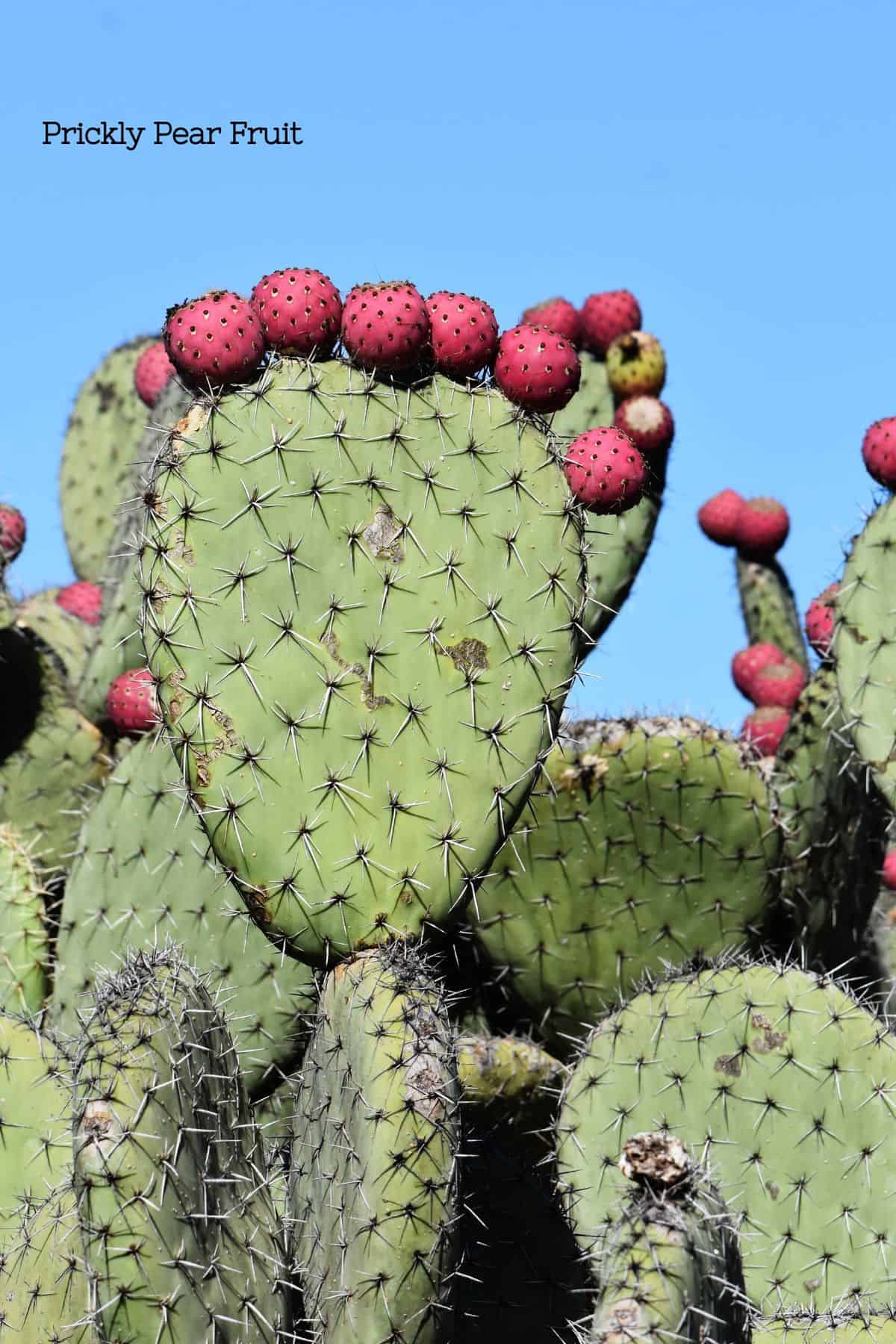
This delicious fruit is not only a common food source but also a symbol of resilience in the plant kingdom. With origins in Central America and the southwestern United States, this succulent fruit has earned several common names, including "tuna fruit" and "Indian fig."
Peak Season and Availability
Prickly pear fruit is at its prime during the late summer and early autumn, making it a fresh delight you can often find in grocery stores and farmers' markets.
Identifiable by its vibrant green skin, ripe prickly pears offer a sweet and juicy pulp that's both refreshing and nutritious.
Prickly Pear Flesh
To access the treasure within, one must navigate the prickly exterior carefully. The oval-shaped fruit conceals its deliciousness beneath a layer of small spines.
Typically, the fresh fruit in grocery stores comes with the spines already removed.
If not, the best way to handle it is to use thick gloves and carefully remove the spines with tweezers. Be aware some spines are thin and hard to see. Don't get poked!
It is a good idea to give it a scrub and a wash to ensure all the barbs are removed. If you get cactus spines in your skin, see this guide for removing them.
Use a knife to cut off both of the ends of the raw prickly pear. make a long vertical slice. You will notice tiny seeds. You can remove them or swallow them, depending on your preferences. They are packed with fiber and healthy fats! Continue slicing and enjoy the juicy pulp within.
The flesh comes in different colors, ranging from light yellow to bright red flesh. For a fruit with a sweet taste, opt for the darker red-colored fruit.
Taste
Wondering what a prickly pear cactus fruit tastes like? It's a delightful blend of sweet and mildly tangy, similar to bubble gum with a texture reminiscent of a watermelon.
This unique flavor profile has made it a beloved ingredient in Mexican cuisine, where it finds its way into fruit salad, salsa, jam, and even ice creams and drinks. Think Prickly Pear Margaritas!
Prickly pear's versatility extends beyond just eating it raw. It can be transformed into prickly pear juice, a delightful beverage packed with health benefits. Additionally, the prickly pear pads, known as nopales, are edible and offer a nutritious addition to various dishes.
 Maxx Herb Red Nopal Cactus ...Shop on Amazon
Maxx Herb Red Nopal Cactus ...Shop on Amazon
Benefits of Prickly Pear
Prickly pear, with its impressive nutritional value, offers a spectrum of health benefits that have been cherished for centuries. This sweet fruit, originating from South America, holds a special place in the world of natural wellness.
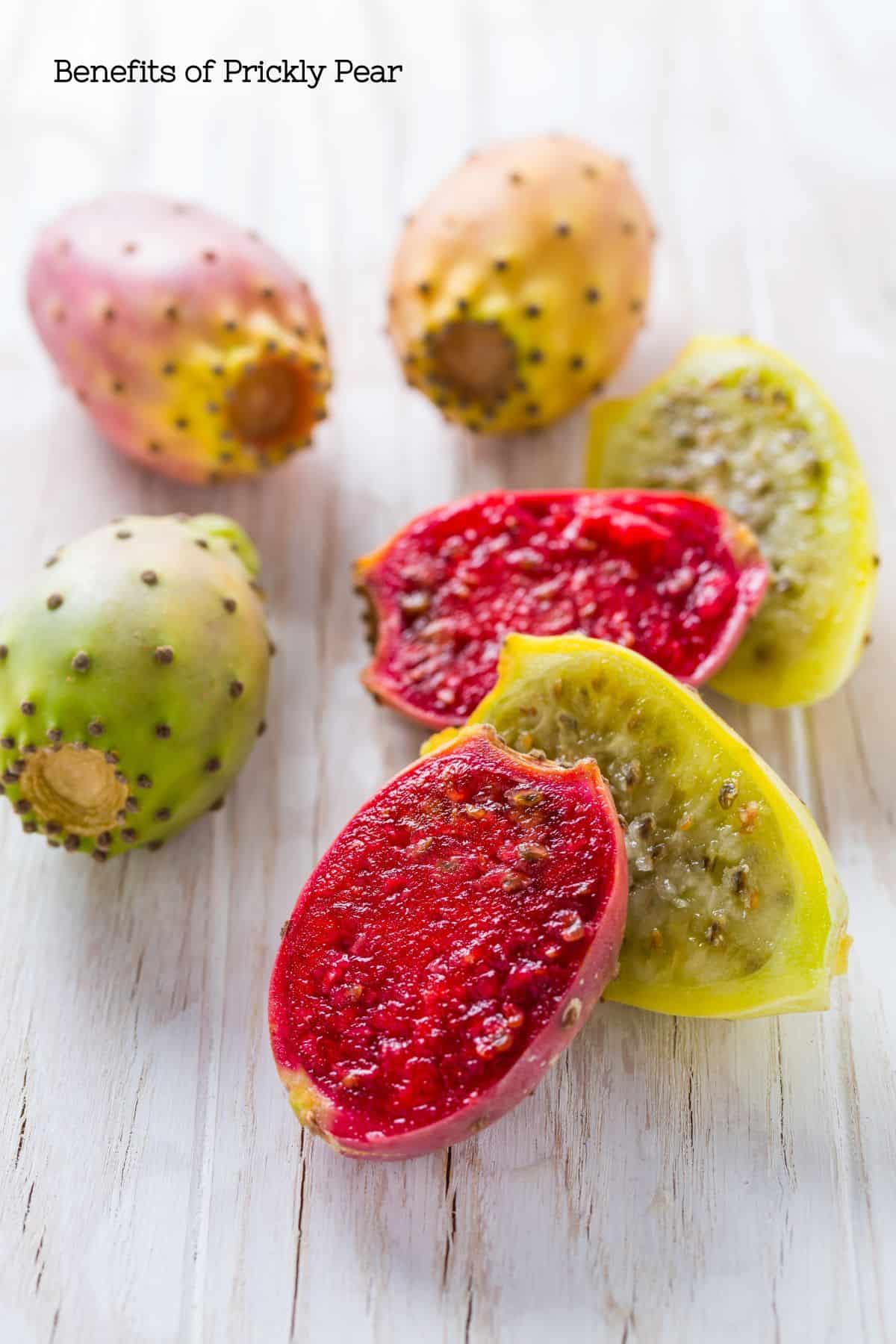
Rich Nutritional Profile
Prickly pear is a nutritional powerhouse. It's notably high in vitamin C, a vital water-soluble vitamin known for its immune-boosting properties.
A single serving of this nutritious fruit can provide a substantial portion of your daily vitamin C needs, helping your body ward off illnesses and maintain healthy skin.
Stabilizing Blood Sugar Levels
One of the standout benefits and medicinal purposes of prickly pear is its ability to assist in managing blood sugar levels.
Studies have shown that compounds in prickly pear, particularly the red prickly pear variety, may help reduce blood sugar spikes after meals.
This makes it an appealing choice for individuals concerned about diabetes or those looking for a natural way to balance their blood glucose.
Heart Health and Blood Pressure: Prickly pear also contributes to cardiovascular well-being. It contains fiber and antioxidants, which are known to support heart health.
The potassium content in this fruit plays a crucial role in regulating blood pressure, potentially reducing the risk of hypertension and related complications.
Antioxidant Powerhouse
This fruit boasts a rich array of antioxidants, which combat harmful free radicals in the body. These antioxidants, including fat-soluble vitamins like vitamin E, protect cells from oxidative stress and contribute to overall health and longevity.
Hydration and Weight Management
With its high water content and fiber, prickly pear can help keep you hydrated and aid in weight management. The fiber promotes a feeling of fullness, reducing overeating, and supporting healthy digestion.
What is Dragon Fruit?
Dragon fruit, a member of the cactus family, stands out among tropical fruits with its captivating appearance and delightful taste. You may also know this exotic fruit by the name pitaya or pithaya.
There are two primary varieties among dragon fruit plants: the red-fleshed with its pink skin and the white-fleshed with its yellow skin.
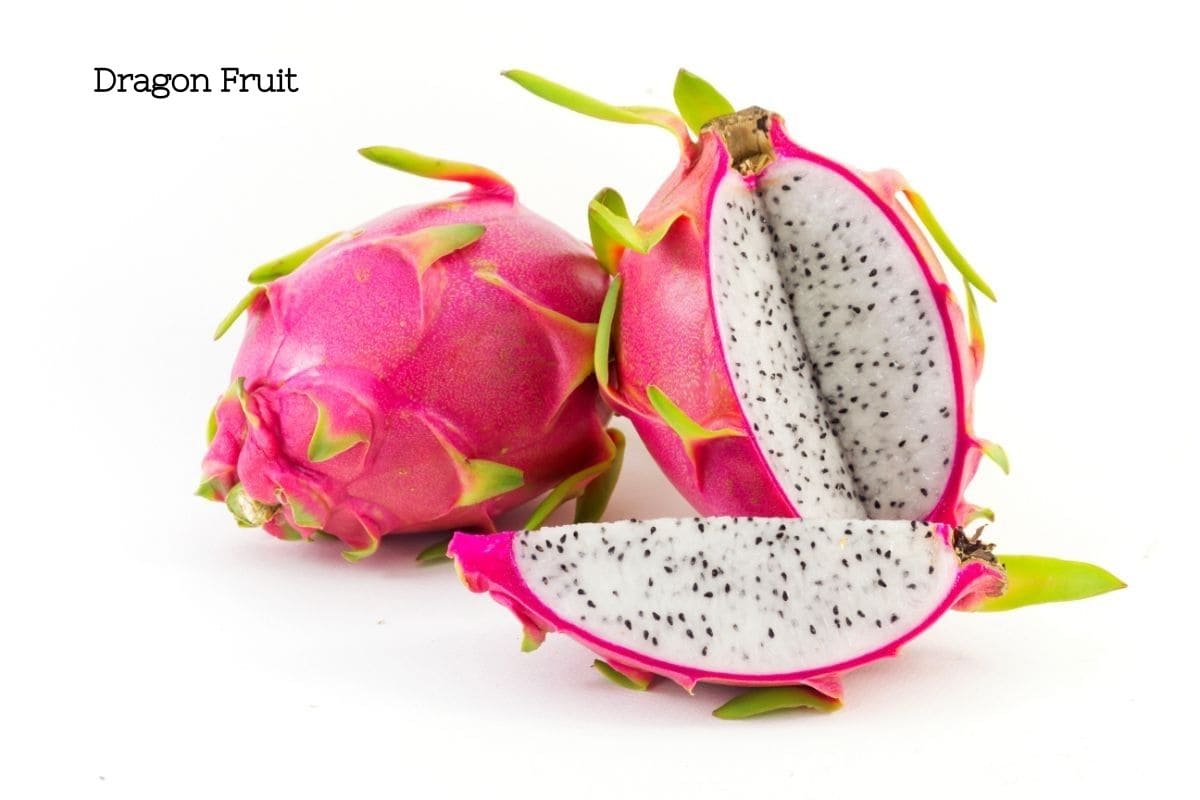
These species of cacti fruit have found their way from subtropical regions to Asian markets and beyond, enticing taste buds worldwide.
Appearance
The visual appeal of dragon fruit is undeniable. Its yellow or pink skin is adorned with green scales, resembling a mythical dragon's exterior.
Dragon fruits with white flesh are speckled with tiny edible seeds, while their red counterparts dazzle with magenta pulp and black seeds.
Taste and Texture
The taste of dragon fruit is a harmonious blend of subtly sweet and mildly tangy flavors, reminiscent of kiwi or pear.
The texture is soft and juicy, with the tiny seeds adding a slight crunch.
The white-fleshed dragon fruits tend to have milder, more delicate flavors compared to the red-fleshed variety, which offers stronger flavors that are similar to berries.
Nutritional Gems
Dragon fruit's nutritional profile is just as impressive as its appearance. It's rich in vitamin C, providing a boost to the immune system. It is also rich in antioxidants that fight free radicals and help reverse the signs of aging.
The dietary fiber content aids digestion and promotes a feeling of fullness, making it a perfect choice for those seeking to maintain a healthy weight.
Unique Seeds
While the seeds in dragon fruit are indeed black, they are not hard like those in many other fruits (like prickly pear). Instead, they are tiny, and edible, and add a delightful textural contrast to the soft flesh.
Eating Dragon Fruit
To cut open a dragon fruit, first slice it in half lengthwise, revealing the vibrant flesh. Then, simply scoop out the soft, edible flesh with a spoon, leaving the skin behind, and enjoy its refreshing taste and delightful crunch of tiny seeds.
To learn more, check out other dragon fruit comparisons like prickly pear vs dragon fruit, starfruit vs dragonfruit, and yellow vs red dragon fruit.
 Organic Dragon Fruit Powder...Shop on Amazon
Organic Dragon Fruit Powder...Shop on Amazon
Benefits of Dragon Fruit
Dragon fruit not only dazzles with its appearance but also shines with a host of health benefits. This exotic fruit, available in both white-fleshed and red-fleshed varieties, is a nutritional powerhouse with a range of advantages for your well-being.
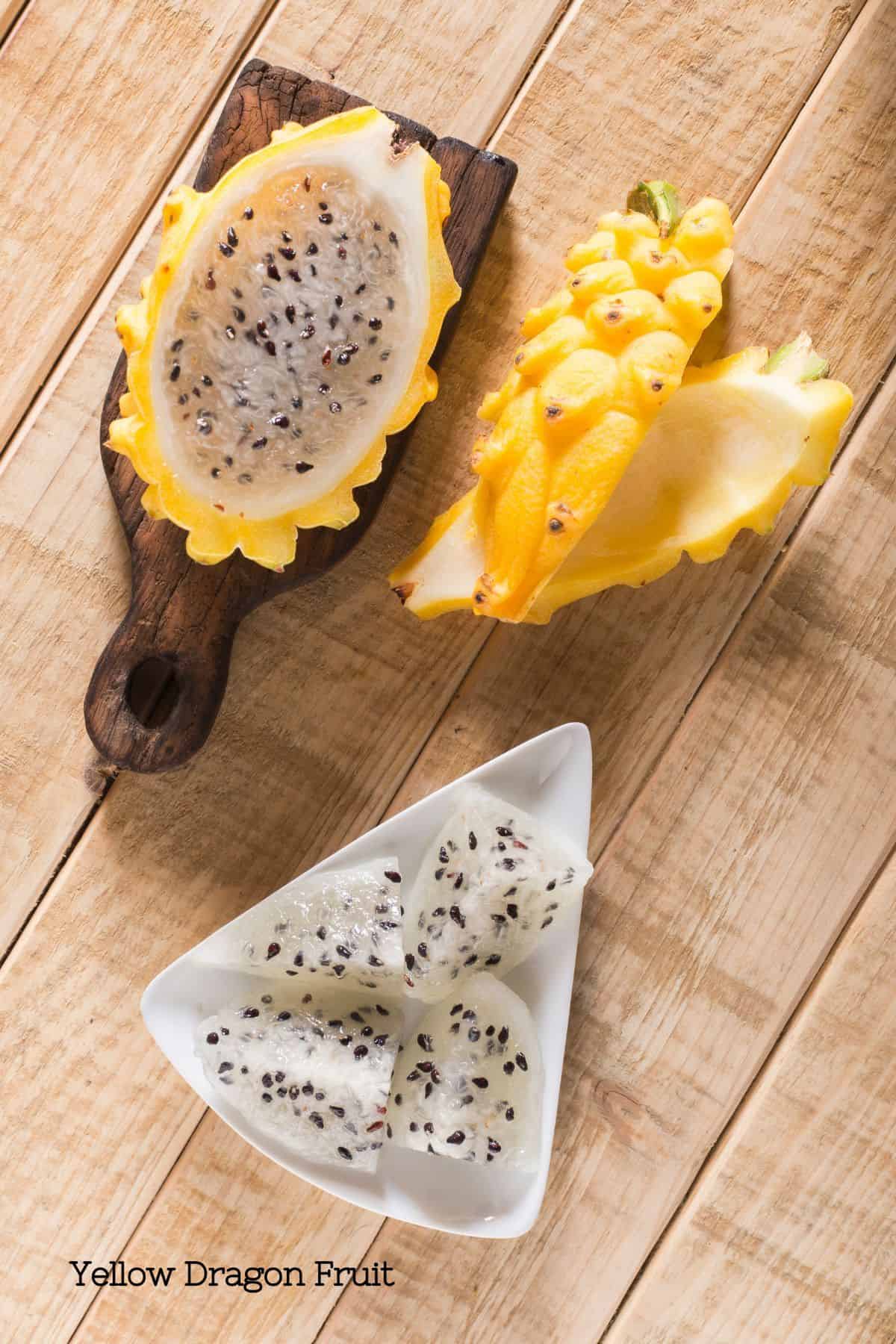
Rich in Vitamins and Minerals
Dragon fruit is a rich source of essential vitamins and minerals. It's particularly high in vitamin C, which supports a strong immune system, aids in collagen production for healthy skin, and helps the body absorb iron.
It also contains vitamin B, iron, magnesium, and antioxidants.
Digestive Health
The fiber content in dragon fruit promotes healthy digestion and can help prevent constipation. It supports regular bowel movements and contributes to a well-functioning digestive system.
Hydration and Weight Management
With its high water content and fiber, dragon fruit helps keep you hydrated and can be a valuable addition to a weight management plan. It promotes a feeling of fullness, reducing the likelihood of overeating.
Heart Health
The fruit's antioxidants and fiber support heart health. It can help lower bad cholesterol levels, reducing the risk of heart disease. Additionally, the potassium content in dragon fruit helps regulate blood pressure.
Antioxidant Power
Dragon fruit is loaded with antioxidants (phytonutrients), including betalains, which give it its vibrant color. Because of this, they are often included in a nutrient-rich anti-cancer diet.
These antioxidants combat free radicals in the body, reducing oxidative stress and the risk of chronic diseases.
Blood Sugar Control
Some studies suggest that dragon fruit may help stabilize blood sugar levels, making it a potential dietary choice for individuals with diabetes. It may assist in reducing blood sugar spikes after meals.
Skin Health
The high vitamin C content in dragon fruit contributes to healthy, radiant skin. It helps combat the effects of aging, protects against UV damage, and promotes collagen production.
Bone Health
Dragon fruit contains calcium and magnesium, essential for maintaining strong and healthy bones. Regular consumption can contribute to better bone density and reduce the risk of osteoporosis.
Anti-Inflammatory Properties
Dragon fruit contains compounds with anti-inflammatory properties, which may help reduce inflammation in the body. This can be particularly beneficial for individuals dealing with inflammatory conditions.
How to Enjoy
Incorporate dragon fruit into your diet by enjoying it fresh, adding it to smoothies, or using it in various culinary creations. Its refreshing taste and wealth of health benefits make it a delectable addition to a holistic, nutrient-rich diet.
Comparison
Prickly pear and dragon fruit, two exotic marvels from the cactus family, offer distinct yet equally impressive nutritional profiles.
Prickly pear boasts antioxidant-rich red or green flesh, known for stabilizing blood sugar and promoting heart health.
On the other hand, dragon fruit, with its striking pink or yellow skin and white or red flesh, excels in providing vitamin C and supporting digestion and hydration.
Whether you favor the sweet subtlety of prickly pear or the refreshing crunch of dragon fruit, both of these tropical treasures can be delightful additions to a health-conscious diet.
Both come in supplement form and can be added to smoothies fresh or freeze-dried!
Nutritional Profiles
| Nutrient (per 100g) | Prickly Pear | Dragon Fruit |
|---|---|---|
| Calories | 41 kcal | 60 kcal |
| Carbohydrates | 9.6g | 8.9g |
| Dietary Fiber | 3.6g | 1.9g |
| Sugars | 6.2g | 8.0g |
| Protein | 0.7g | 1.2g |
| Fat | 0.5g | 0.4g |
| Vitamin C | 14.0mg (23% DV) | 9.0mg (15% DV) |
| Vitamin B | Varies | 0.0mg |
| Calcium | 83mg (8% DV) | 9mg (1% DV) |
| Iron | 0.5mg (3% DV) | 0.65mg (4% DV) |
| Potassium | 220mg (6% DV) | 228mg (6% DV) |
Please note that these values can vary slightly depending on the specific variety and ripeness of the fruit. Nonetheless, this comparison highlights some key differences in nutritional content between prickly pear and dragon fruit.
FAQ
Dragon fruit, pitaya, and prickly pear are both exotic cactus fruits within the same family. They have a similarly juicy flesh, but some distinct differences. Dragon fruit does not have spines as the prickly pear does. It has spiked-looking flesh that does not poke. The colors differ as well. The cactus pear is green or red, while the pitaya is red or yellow. The dragon fruit seeds are soft and edible like kiwi, while prickly pears are much crunchier. Both, however, offer impressive antioxidants and nutrient profiles.
Prickly pear fruit is a sweet and juicy fruit similar to watermelon and berry with a hint of bubblegum flavor. Its texture is a mix between kiwi and watermelon.
Yes! Be sure to thoroughly remove the spines to avoid getting poked. However, this cactus pear can be eaten raw or cooked and is used in many drinks, jams, desserts, salsas, candies, ice cream, and salads.
Like many fruits, prickly pear can have a mild laxative effect. Enjoy in small amounts at first to see how your body responds to it.
Always consult a doctor before making major changes to your diet or routine. Prickly pear can affect blood sugar, so if taking medications for glucose regulation, be sure to check with your physician to closely monitor. With any food or medication, it is important to listen to your body and go slow. Moderation is key!
Conclusion
The world of nutrition offers a rich tapestry of choices, and both prickly pear and dragon fruit are shining stars in this vibrant spectrum.
Whether you're drawn to the unique flavor and health benefits of prickly pear or the captivating appearance and refreshing taste of dragon fruit, these fruits have much to offer on your journey to a healthier lifestyle.
We'd love to hear about your experiences with these exotic wonders and invite you to share your stories, recipes, and wellness insights with us. Stay connected with our community by subscribing to our newsletter on mindfully healthy living, where you'll discover more about clean eating, natural remedies, and holistic living.
Thank you for joining us on this flavorful exploration of superfoods.
Be well,
Natalie


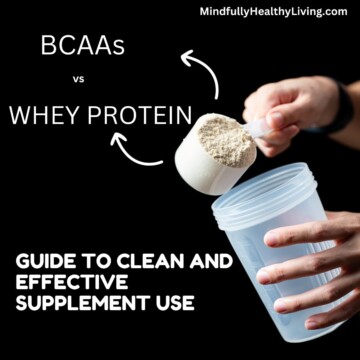
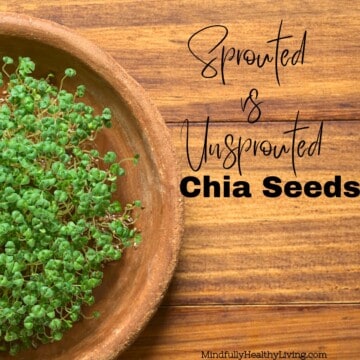
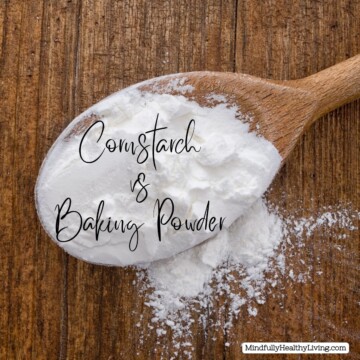
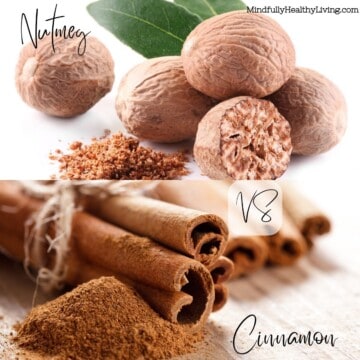



Comments
No Comments